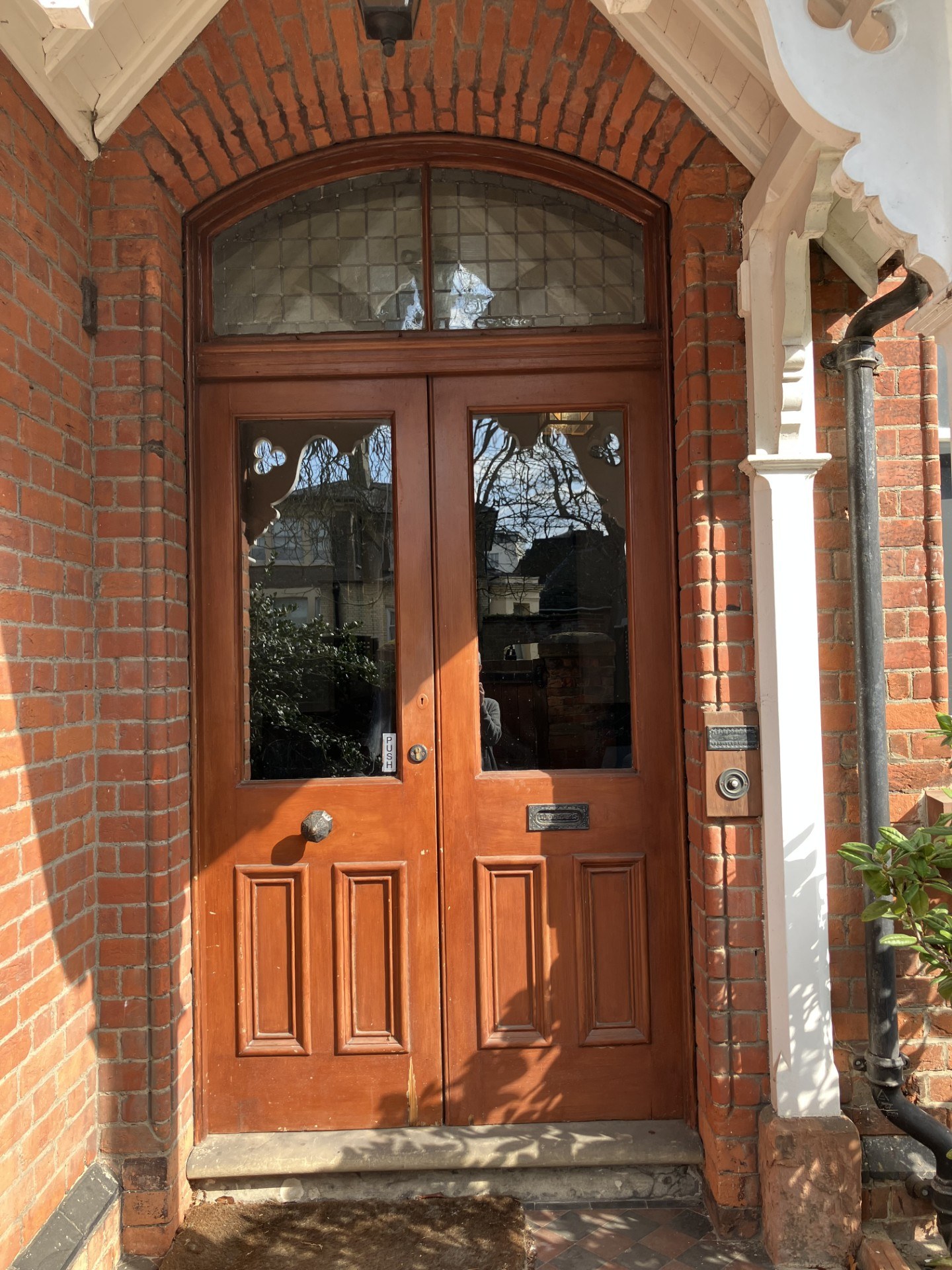
A Few of our Favourite Things:
3. Castleside Front Door
Just look at it. Yes, it’s a door, but not one you see on an average three-bed semi. It’s from a different age, not Victorian, but of an indefinable time when things were different.
From 2012 until recently, this was the first impression visitors had when they made their visit to find out about the enigmatic society, to see if the rumours were right.
First impressions count. It’s a large door, surrounded by old style brickwork. There’s ornamental brasswork and a doorbell with the message: Only ring if an answer is required. That’s a bit bossy: Important People only allowed here! Mere Tradesmen should use a different door. Into the brickwork on the left someone has scratched the letter M. M for Mabel? Surely she wouldn’t have carried out this little bit of vandalism.
No, that was probably done by some schoolboy before the Society bought the building in 1930. A gesture to show his individuality or rebelliousness when staying at this boarding house for Bedford School. Not a place of happiness for younsters with parents thousands of miles away. Perhaps he made a name for himself in adulthood, or was killed in the great War, or even became a Society member. All sorts passed through this door. He, like museum visitors, would have been struck by the cool quietness of the hallway, the stone flooring, and the dark staircase in front, leading up to a landing beyond which was...goodness knows what mysteries.
Who went through that door? Members full of Hope, Mabel herself, Goodwin, Rasmussen, Dilys and the rest. And Harry Potter! (Yes, at one point there was a servant of that name working at the school). And the Box. When they finally had the Box, surely they would have used that door to take it to the room where they hoped it would be opened one day.
But not a single Bishop used that door.
At a philosophical level, doors symbolise moving from one place or state to another, leaving one life behind, or making a choice to go in a particular direction. Quite a few visitors might confirm that.
~ Adrian, Museum Volunteer






